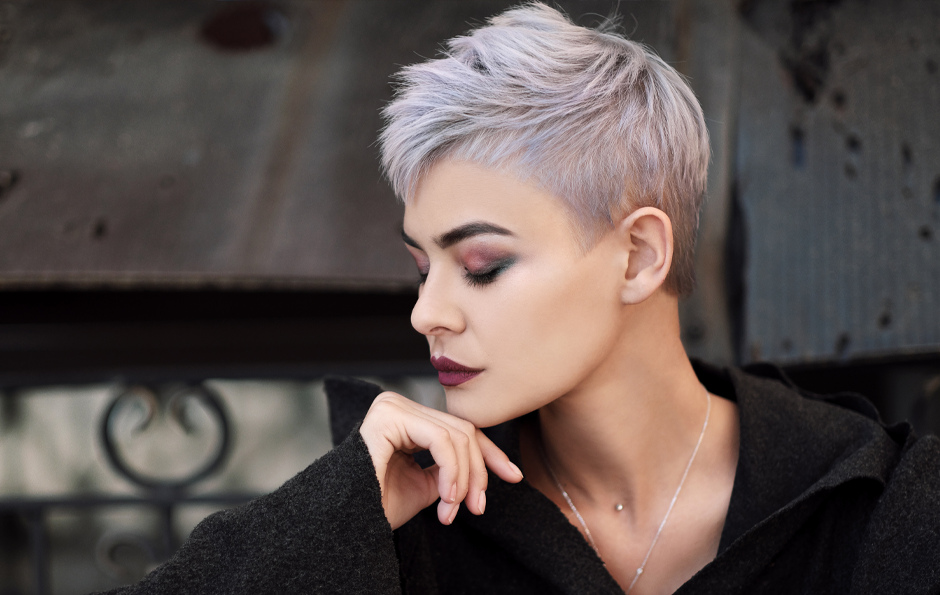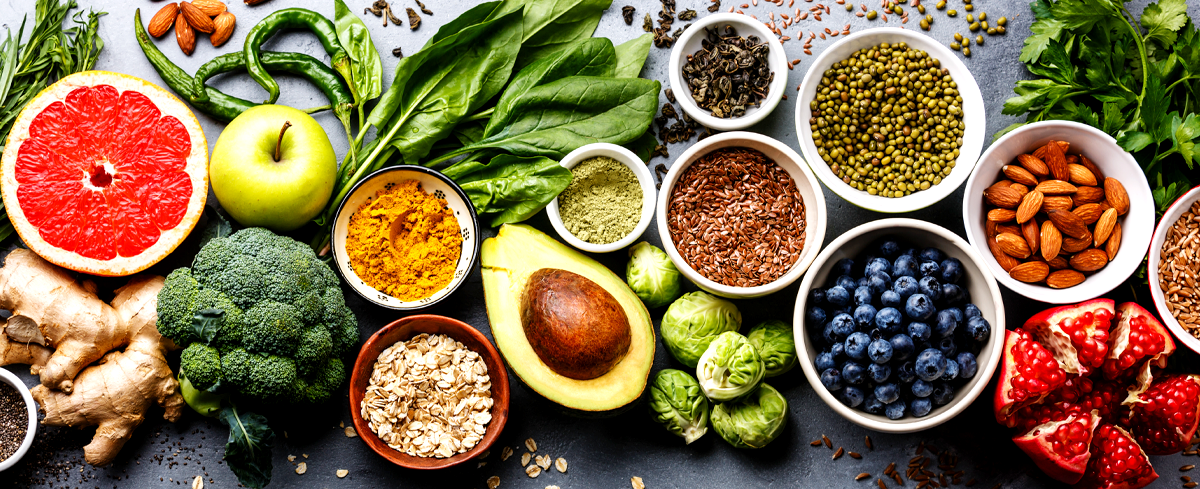
Why hair goes white.
Anyone with a romantic outlook on life may think white hair is a sign of maturity, authority and wisdom. While for some it is undoubtedly true, when white hair does appear, many men and women experience an overwhelming feeling of depression and fear of growing old, because, alas, white hair is also a sign of old age. Over the past few years, however, grey has no longer been associated purely with ageing, it has become a trendy colour worn by young girls and more mature women alike. But why does hair go white? THE CAUSES. As our hair grows in the hair follicles, it undergoes processes to determine its colour. Our hair follicles age with our body and as they do, the amount of hydrogen peroxide (oxygenated water) increases, causing our hair to fade. More hydrogen peroxide is produced due to the gradual lack of the enzyme catalase, which normally keeps the amount of hydrogen peroxide under control, breaking it down into its two basic components: water and hydrogen. As hydrogen peroxide production increases, it inhibits thyroxine, an enzyme which processes melanin, the natural pigment in our hair, in the melanocytes.
As this natural colourant begins to diminish, our hair gradually becomes white. In other words, as less melanin is produced, hair becomes grey, silver or white. Hair goes through natural loss and regrowth cycles and, after 35 years, is more likely to grow back grey. This is the natural process which makes hair go white. Our age, however, is not the only reason our hair turns white, at times even prematurely: there are also genetics, our diet and stress. Genetics. A study carried out by researchers at University College London revealed that a gene called Irf4, which was identified with about ten other genes as having an effect on the density and colour of our hair and eyebrows, is responsible for white hair. So, if your parents, uncles, aunts, grandparents and great-grandparents turned prematurely grey, there’s a good chance you will too.  Diet. Fats, sugars and starches in very elaborate and processed food increase the amount of acidity in our bodies, gradually and sometimes prematurely causing our hair to turn white. If, on the other hand, our diet contains plenty of vitamins and mineral salts, the cells which produce melanin are able to work properly, although they are destined to slow down over time and eventually come to a stop. Our intake of Group B vitamins is very important, especially vitamins B7 (biotin) and B12; B7 strengthens our hair and helps slow down loss and the process of going white; B12 lowers our levels of cortisol, the stress hormone, which also causes our hair to turn white. So our diet should contain fresh fruit and leaf vegetables, natural sources of vitamins and minerals, and eggs, cereals and meat which provide us with useful amounts of proteins. Stress. Stress is a psychophysical reaction of our body in response to tasks we consider excessive. Researchers at New York University discovered that stress hormones cause hair follicle stem cells to migrate until there are no more melanocytes stem cells within the follicle which produce the pigment called melanin that gives our hair its colour. If we look at it another way, the appearance of white hair can be taken as an alarm bell, warning us of an excessive amount of the stress hormone cortisol. Vitamin B12 is invaluable in lowering cortisol levels and can be found mainly in eggs, salmon, sardines and tuna. WHAT IF I ACTUALLY WANT GREY HAIR? Over the past few years, granny hair has become the top trending look. The fashion was started by Jean Paul Gaultier in one of his runway shows, where his gorgeous models shocked the public with their long silver locks. The idea took off, first taking the US then the rest of the world by storm. Singers, actresses, designers and fashionistas all jumped on the band wagon, imitated by women of all ages, from the very young to the more mature who, after years of dyeing their hair, could finally experience the exhilaration of showing off their natural colour, while feeling trendy into the bargain. A word of warning though! Grey needs just as much maintenance as other colours. How do you go grey? If you decide to stop colouring your hair and leave it grey, there are a couple of things you need to do. First, if you want your hair to look a natural salt and pepper, at least 60% of it must be white. It is best not to suddenly stop colouring your hair but to do it gradually, to give it time to get used to the change, lightening or darkening your normal shade if necessary so the contrast is less obvious. Next, your cut is just as important as your colour. Short boyish cuts are ideal for a carefree look that takes years off your face. If, on the other hand, you want to keep your hair long, it’s a good idea to trim the ends as it grows. A visit to your salon is a must however, so you can decide with your stylist the best way to cut and colour your hair. Last but not least, your hair care routine will change a bit. As we have seen, hair becomes white because it no longer has pigments that act as a natural protective filter. As a result, keratin oxidises with the heat of UV rays, creating those notorious yellow tones which can be neutralised by regularly applying nourishing masks to strengthen your hair and using an anti-yellow shampoo.
Diet. Fats, sugars and starches in very elaborate and processed food increase the amount of acidity in our bodies, gradually and sometimes prematurely causing our hair to turn white. If, on the other hand, our diet contains plenty of vitamins and mineral salts, the cells which produce melanin are able to work properly, although they are destined to slow down over time and eventually come to a stop. Our intake of Group B vitamins is very important, especially vitamins B7 (biotin) and B12; B7 strengthens our hair and helps slow down loss and the process of going white; B12 lowers our levels of cortisol, the stress hormone, which also causes our hair to turn white. So our diet should contain fresh fruit and leaf vegetables, natural sources of vitamins and minerals, and eggs, cereals and meat which provide us with useful amounts of proteins. Stress. Stress is a psychophysical reaction of our body in response to tasks we consider excessive. Researchers at New York University discovered that stress hormones cause hair follicle stem cells to migrate until there are no more melanocytes stem cells within the follicle which produce the pigment called melanin that gives our hair its colour. If we look at it another way, the appearance of white hair can be taken as an alarm bell, warning us of an excessive amount of the stress hormone cortisol. Vitamin B12 is invaluable in lowering cortisol levels and can be found mainly in eggs, salmon, sardines and tuna. WHAT IF I ACTUALLY WANT GREY HAIR? Over the past few years, granny hair has become the top trending look. The fashion was started by Jean Paul Gaultier in one of his runway shows, where his gorgeous models shocked the public with their long silver locks. The idea took off, first taking the US then the rest of the world by storm. Singers, actresses, designers and fashionistas all jumped on the band wagon, imitated by women of all ages, from the very young to the more mature who, after years of dyeing their hair, could finally experience the exhilaration of showing off their natural colour, while feeling trendy into the bargain. A word of warning though! Grey needs just as much maintenance as other colours. How do you go grey? If you decide to stop colouring your hair and leave it grey, there are a couple of things you need to do. First, if you want your hair to look a natural salt and pepper, at least 60% of it must be white. It is best not to suddenly stop colouring your hair but to do it gradually, to give it time to get used to the change, lightening or darkening your normal shade if necessary so the contrast is less obvious. Next, your cut is just as important as your colour. Short boyish cuts are ideal for a carefree look that takes years off your face. If, on the other hand, you want to keep your hair long, it’s a good idea to trim the ends as it grows. A visit to your salon is a must however, so you can decide with your stylist the best way to cut and colour your hair. Last but not least, your hair care routine will change a bit. As we have seen, hair becomes white because it no longer has pigments that act as a natural protective filter. As a result, keratin oxidises with the heat of UV rays, creating those notorious yellow tones which can be neutralised by regularly applying nourishing masks to strengthen your hair and using an anti-yellow shampoo.


Validate your login
Sign In
Registrati a "Medavita Salon Friends" e ricevi vantaggi e promozioni per i servizi in salone.
Create New Account